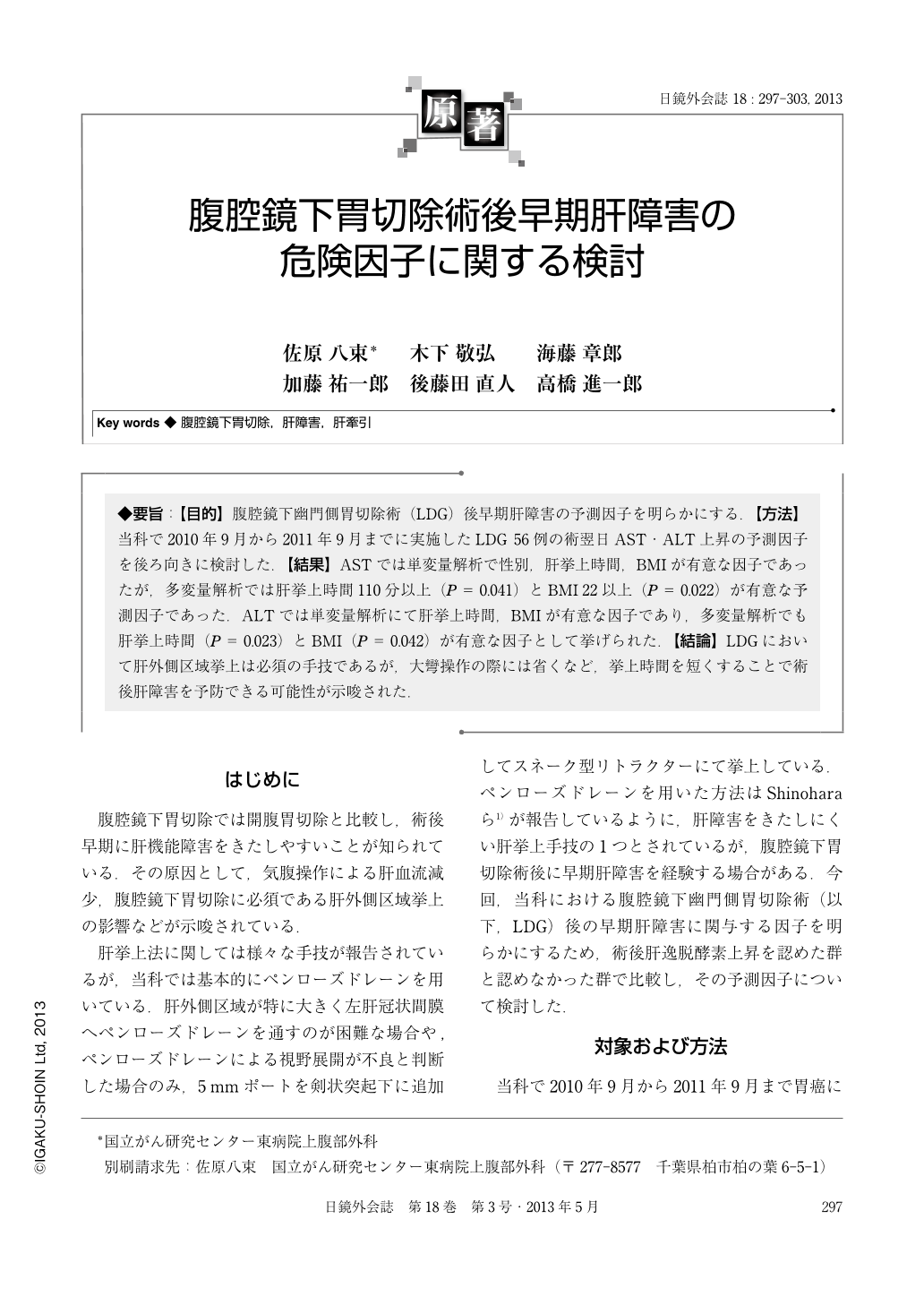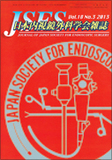Japanese
English
- 有料閲覧
- Abstract 文献概要
- 1ページ目 Look Inside
- 参考文献 Reference
◆要旨:【目的】腹腔鏡下幽門側胃切除術(LDG)後早期肝障害の予測因子を明らかにする.【方法】当科で2010年9月から2011年9月までに実施したLDG 56例の術翌日AST・ALT上昇の予測因子を後ろ向きに検討した.【結果】ASTでは単変量解析で性別,肝挙上時間,BMIが有意な因子であったが,多変量解析では肝挙上時間110分以上(P=0.041)とBMI22以上(P=0.022)が有意な予測因子であった.ALTでは単変量解析にて肝挙上時間,BMIが有意な因子であり,多変量解析でも肝挙上時間(P=0.023)とBMI(P=0.042)が有意な因子として挙げられた.【結論】LDGにおいて肝外側区域挙上は必須の手技であるが,大彎操作の際には省くなど,挙上時間を短くすることで術後肝障害を予防できる可能性が示唆された.
[Aim]To investigate the predictive factors for transient liver dysfunction after laparoscopic distal gastrectomy. [Patients and Methods] The data of 56 patients who underwent laparoscopic distal gastrectomy between September 2010 and September 2011 in our hospital were retrospectively evaluated. The cases with division of the accessary left hepatic artery were excluded. Postoperative liver dysfunction was defined as that the value of AST or ALT on postoperative day 1 exceeded over 2.5 times than that before surgery. [Results] The significant predictive factors for AST elevation were sex(male), duration of the liver retraction, and high body mass index (BMI) in univariate analysis, and among them duration of the liver retraction and high BMI were confirmed in multivariate analysis (P=0.041 and 0.022,respectively). With regard to ALT elevation, the predictive factors were duration of the liver retraction and high BMI in univariate analysis, and duration of the liver retraction and high BMI (P=0.023 and 0.042, respectively) were confirmed in multivariate analysis. [Conclusions] In laparoscopic distal gastrectomy, liver retraction is essential, however, this maneuver may lead to postoperative transient liver dysfunction. For prevention of this complication, duration of the liver retraction should be minimized, and not be used in unnecessary situations such as lymph nodes dissection around the great curvature site, especially in high BMI cases.

Copyright © 2013, JAPAN SOCIETY FOR ENDOSCOPIC SURGERY All rights reserved.


